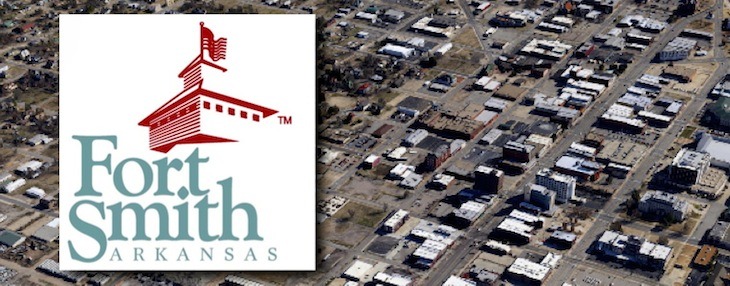Fort Smith Board considers federal ‘Section 108’ loan for sewer line work
by July 31, 2018 6:04 pm 532 views

The Fort Smith Board of Directors is considering the possibility of a Section 108 loan that could restrict 42% of annual Community Development Block Grant (CDBG) funds over the next 20 years. The $4.22 million loan could be used for financing of economic development, housing rehabilitation, public facilities, and other physical development projects.
Fort Smith Community Development Director Matt Jennings presented a report at the Board’s study session on Tuesday (July 31) at the request of City Administrator Carl Geffken. The motivation behind the initial report was to examine replacement of wastewater lines in the low-to-moderate income (LMI) portions of the city.
The Section 108 Loan Guarantee Program is tied to the CDBG program. As such, it allows a 20-year repayment period for five times the grant provided. In 2018, the city received $844,327 in grant funds. Five times that total is how the Fort Smith calculation arrived at $4.22 million. Loans typically range from $500,000 to $140 million, depending on the scale of the project or program. Costs can be spread over time with flexible payment terms (lower payments during the first few years, for example), and borrowers can take advantage of lower interest rates than private financing sources, Jennings said.
For a project to qualify, it must meet one of the CDBG National Objectives, meaning it would need to benefit LMI persons within the city, work toward preventing or eliminating “slums and blight,” and meet a “particularly urgent community development need.” Issue 3 — approved by voters in 2016, it enables cities to participate in economic development — also could align with the terms of the loan.
So far, Little Rock is the only major city in Arkansas to take out a Section 108 loan. Their chosen use was for a community center, Jennings said. To qualify for the loan, the city would need to present collateral, and that’s where the 42% reduction to its CDBG funds could come into play. Had the loan been in effect for 2018, that means area nonprofits would have received $487,737 instead of the $844,327 total. If the Board chooses to move forward with the loan, Jennings said his staff would need direction on how to proceed with a “consolidated plan” that includes the collateral pledge and nonprofit funding. The Board’s options would be to eliminate public service funds, the homeless category, or reduce housing assistance.
Possible cons, Jennings said, are that Section 108 loans aren’t tax-exempt and use of the money on wastewater projects “could be seen as using LMI funds to complete consent decree work only in older neighborhoods.” Furthermore, “Using these funds are not reducing the LMI resident’s sewer bill by a factor of the funds used from Section 108.” A reduction in public service funds also could potentially take off the table access to services like dental care, prescribed pharmaceuticals, and fees to join Girls, Inc., for the city’s 25% of residents living in poverty.
A risk of the loan — particularly with the Trump administration’s proposal for moving CDBG into the Department of Commerce strictly for economic development — is that the program could disappear entirely. President George W. Bush proposed something similar in 2006, but Congress did not take it up. Still, the possibility remains, and if that were to occur, the city would continue to be responsible for paying back the loan, only without the grant funding mechanism in place. That’s why the loan requires the city to have other collateral aside from the 42% pledge of grant funding. The additional collateral can include an alternate revenue stream, property, or other sources provided the coverage ratio is 1.10 to 1.15 or, for a property, 1.2 to 1 for the loan to value of the property and building.
Tuesday’s presentation was for informational purposes only, but it could come back before the Board at a later date.
